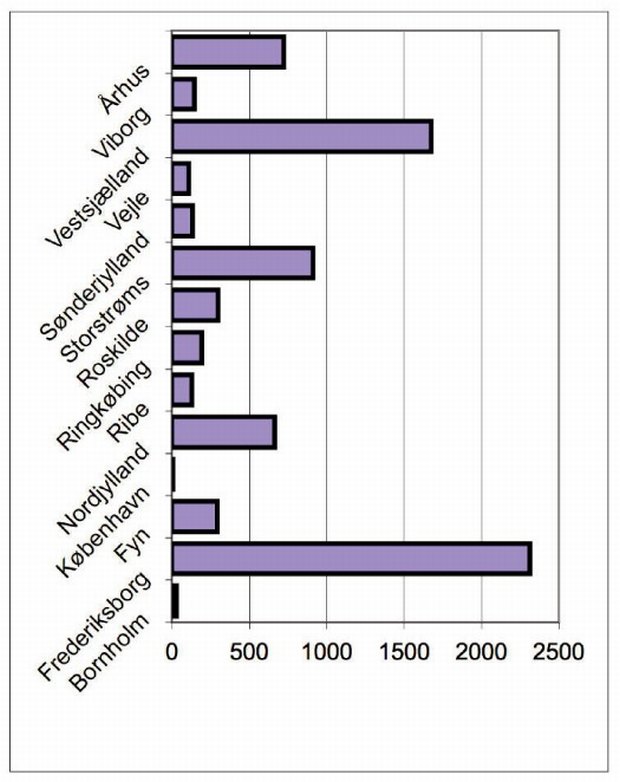A 2005 survey in Finland among some 4000 second-home owners revealed that 1 per cent planned to move permanently into their second home, while an additional 1 per cent would consider moving permanently to their second home. In Finland, this amounts to some 11 000 individuals.
There are two groups of the population who make up the major part of this flow, namely, economically active families with small children, and senior citizens. Senior citizens moving to their second homes are however viewed as potentially representing a future challenge to their future host municipalities, as, like all other local inhabitants, they have the same right to social and health services.
Denmark is the only Nordic country that keeps track of the in-migration of senior citizens who set up permanent residence in summer houses. This comes as a consequence of the 1992 change in the Danish Planning Act, which enabled senior citizens and pensioners to settle permanently in their summer houses if the house had been in their ownership for more than eight years. Every year Danish municipalities with summer house areas are required to report to the Ministry of the Environment on the number of summer houses that are occupied permanently (legally or illegally) in their municipalities.
In 2005, Statistics Denmark published a brief study on whether the 1992 change in the Planning Act had provided for something that might resemble a major influx of senior citizens into the summer house municipalities over the 1995-2005 decade. Over these 10 years, an increasing number of persons aged 60 years or above decided to set up permanent residence in their summer houses.
As of 2005, this figure amounted to some 10,900 persons, representing a 130 per cent increase from 1995. By 2006, this means that almost 7600 summer house dwellings had been transformed from recreational to permanent dwellings by senior citizen owners moving in.
Most summer houses that are permanently settled are to be found in what used to be Frederiksborg and Vestsjælland Amt, indicating that the senior citizens undertaking this re-location are mainly moving in from homes in the greater Copenhagen area. Their new homes are well within commuting distance from their previous home location, meaning that they may re-settle without having to abandon their established social networks and day-to-day contacts in their new life as summer house inhabitants:
In Denmark, this minor 'senior tsunami' has had its greatest effect on the demographic make-up of coastal municipalities in North Zealand which already hosts a large stock of summer house plots. In the municipalities of Frederiksværk, Græstedt-Gilleleje and Helsinge an additional 400 persons above 60 years of age were added to the population by in-migrating summer house owners during the 1995-2005 period. In these communities, this new part of the local population has now come to constitute every tenth inhabitant at 60 years of age or older.


By Jon M. Steineke, previous Research Fellow at Nordregio